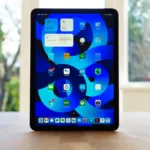How To Take Screenshots In Selenium?
Hello friends hope you are doing well, today’s article is about How to take screenshots in selenium. Taking snapshots of web pages plays a crucial role in Selenium, a powerful tool used for automating tasks on the internet. As we go through the intricacies of web development and testing, the ability to take screenshots provides us with visual documentation of each step in our automation journey. In the realm of Selenium, the process of capturing these screenshots is not only essential for troubleshooting and debugging but also serves as a valuable resource for creating detailed reports. Through simple and effective methods, Selenium empowers users to freeze moments in time, enabling them to analyze the state of web pages during automated interactions.
This article will clear you all the confusion about how to take screenshots in selenium, by exploring diverse techniques that go beyond mere snapshots, offering users the flexibility to capture entire web pages, and specific elements, and even modify images using external libraries.
By mastering these screenshot-taking capabilities, Selenium users enhance their ability to validate and document their web automation processes with precision and clarity.
Taking Screenshots In Selenium By Using The WebDriver Interface:
Taking screenshots in Selenium using the WebDriver Interface is a simple process that involves capturing images of what’s displayed on a webpage during automation. Here’s a simple guide:
Open the Browser:
Start by opening the web browser of your choice, such as Chrome or Firefox.
Navigate to the web page:
Direct the browser to the webpage you want to capture. This is the page where you will take the screenshot.
Initialize the WebDriver:
Think of the WebDriver as the magic wand that controls the browser. Initialize it by creating a connection between your automation script and the browser.
Take the Screenshot:
Once the WebDriver is set up, use the provided command to capture the entire visible area of the webpage.
Save the Screenshot:
After capturing the screenshot, save it to a file. This file will contain the image of the webpage at that particular moment.
Close the Browser:
Now that you have captured the screenshot, it’s time to close the browser. This step ensures that your automation script concludes neatly.
Taking screenshots with the WebDriver Interface involves opening the browser, navigating to the desired webpage, initializing the WebDriver, capturing the screenshot, saving it, and closing the browser.
By using JavaScript Executor For Dynamic Content To Take Screenshots In Selenium:
Capturing screenshots in Selenium using JavaScript Executor for Dynamic Content involves the below simple steps:
Open the Browser:
Start by launching your preferred web browser, like Chrome or Firefox.
Navigate to the web page:
Direct the browser to the specific webpage containing dynamic content that you want to capture.
Initialize JavaScript Executor:
Think of JavaScript Executor as a special tool. Initialize it to execute JavaScript code on the webpage.
Adjust Page Properties:
If necessary, you can use JavaScript Executor to make adjustments to the webpage, like zooming or modifying elements.
Capture the Screenshot:
Employ JavaScript Executor to command the browser to capture the entire visible area of the dynamic webpage.
Save the Screenshot:
Once captured, save the screenshot to a file. This file now contains the image of the dynamic content at that specific moment.
Close the Browser:
Conclude the process by closing the browser. This ensures that your automation script wraps up neatly.
This method allows you to capture dynamic elements and their changes during your automated interactions.
What Is The Procedure For Taking Screenshots In Selenium By Utilizing Python’s PIL/Pillow Library:
To capture screenshots in Selenium using Python’s PIL/Pillow Library, follow the given instructions:
Open the Browser:
Begin by launching your preferred web browser.
Go to the web page:
Direct the browser to the specific webpage.
Take a Screenshot Using Selenium:
Utilize Selenium to take an initial screenshot of the entire visible area of the webpage.
Save the Screenshot Using The Pillow:
Open the captured screenshot using the Pillow library.
Modify the Image:
If needed, you can apply modifications to the image using Pillow. For instance, you might want to crop or resize the screenshot.
Save the Modified Screenshot:
Save the modified screenshot to a file. This file now contains the enhanced image of the webpage.
Close the Browser:
Conclude the process by closing the browser. This ensures that your automation script concludes smoothly.
This method provides additional capabilities for image processing and customization during your automated interactions.
How To Use Ashot Library For Full Page Screenshots In Selenium:
To capture full-page screenshots in Selenium using Ashot Library, follow these straightforward steps:
Tap on Browser:
Open any of the web browsers, like Chrome or Firefox.
Go to Webpage:
Direct the browser to the specific webpage that you are going to capture.
Initialize Ashot:
Consider Ashot as a special tool for capturing screenshots. Initialize it to work with Selenium.
Take a Page Screenshot:
Use Ashot to command the browser to capture the entire visible area of the webpage. Unlike standard screenshots, this method captures the complete page, including content below the visible area.
Save the Full Page Screenshot:
Once captured, save the full-page screenshot to a file. This file now contains the image of the entire webpage.
Close the Browser:
Conclude the process by closing the browser.
This method allows you to capture the complete content of a webpage, providing a comprehensive snapshot of the entire page during your automated interactions.
How To Save Screenshots In Selenium:
Saving screenshots in Selenium is like taking a photo of what’s on your computer screen during automated tasks. Here’s how you can do it in simple terms:
Take the Picture:
Imagine you are using a special camera (Selenium) to take a picture of what’s happening on a website.
Decide Where to Keep It:
After taking the picture, you need to decide where to store it on your computer. This is like choosing a folder to put your photos in.
Give It a Name:
Just like you give a name to your photos, decide on a name for your screenshot. This helps you recognize what it is later.
Remember Where You Put It:
It’s important to remember where you saved your screenshot. This is like remembering where you put a photo album so you can find it later.
Look at It Whenever You Want:
Once saved, you can open your screenshot whenever you want. It’s like looking at a photo to remember what happened during your automated tasks.
Conclusion:
Finally, capturing screenshots in Selenium is like taking snapshots of moments during automated journeys on the internet. Whether it’s freezing the entire webpage or focusing on specific elements, these screenshots serve as visual documentation for troubleshooting, debugging, and creating detailed reports. Using the WebDriver Interface provides a basic yet effective method while incorporating JavaScript Executor adds flexibility for dynamic content. Python’s PIL/Pillow Library enhances image processing, and Ashot Library offers the capability to capture complete web pages. Mastering these simple techniques empowers users to validate, document, and gain insights into their web automation processes precisely and clearly.







